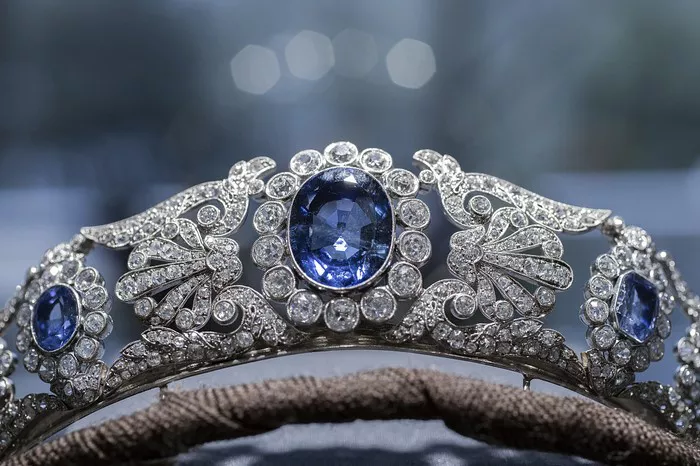Jewelry, as an art form intertwined with culture and history, has always been a symbol of status, wealth, and personal taste. Among the various gemstones, sapphires have occupied a unique position due to their hardness, durability, and rich colors. Yellow sapphires, with their warm and elegant hues, are particularly favored by collectors and consumers. Blue Nile, as one of the largest online diamond and jewelry retailers, offers a diverse selection of sapphires, including yellow sapphires. From a professional jewelry appraisal perspective, the origin of a yellow sapphire is closely related to its quality. This article will delve into the relationship between the origin and quality of Blue Nile yellow sapphires in detail.
Introduction to Yellow Sapphire Origins
Sapphires, including yellow sapphires, are primarily sourced from various mining regions around the world. The main origins of yellow sapphires include:
Sri Lanka (Ceylon): Known as the “Island of Gems,” Sri Lanka is famous for producing high-quality sapphires. The yellow sapphires from this region are known for their pure colors, high saturation, and good clarity.
Australia: Australia is also a major producer of sapphires, including yellow sapphires. The sapphires from this region are characterized by their large sizes and diverse colors. However, the quality can vary widely.
Madagascar: Madagascar produces a significant amount of sapphire, including yellow sapphires. These sapphires often have unique color tones and patterns, making them highly valued by collectors.
Burma (Myanmar): Burma is renowned for producing high-quality sapphires with vibrant colors. Yellow sapphires from this region are often highly saturated and have a deep, rich color.
Thailand: Thailand is another important sapphire mining region. The yellow sapphires from here are known for their good clarity and uniform color distribution.
Factors Affecting Sapphire Quality
To understand the relationship between the origin and quality of yellow sapphires, it is essential to first understand the factors that determine sapphire quality. Sapphire quality is primarily evaluated based on the “4Cs” (Cut, Clarity, Color, and Carat Weight), as well as additional factors such as origin and treatment.
Cut: The cut of a sapphire affects its brilliance and overall appearance. A well-cut sapphire can maximize its light reflection and refraction, enhancing its beauty.
Clarity: Clarity refers to the presence of inclusions (imperfections) within the sapphire. The fewer inclusions, the higher the clarity grade, and the more valuable the sapphire.
Color: Color is the most crucial factor in evaluating sapphire quality. For yellow sapphires, the purity, saturation, and tone of the color are all important considerations.
Carat Weight: Carat weight refers to the size of the sapphire. Generally speaking, larger sapphires are more rare and valuable.
Origin: The origin of a sapphire can affect its quality. Sapphires from certain regions are known for their superior quality, while those from other regions may have more variations in quality.
Treatment: Many sapphires undergo heat treatment to improve their color. While treated sapphires can still be valuable, naturally occurring sapphires with no treatment are often more highly valued.
The Relationship Between Origin and Quality
The origin of a yellow sapphire can indeed affect its quality. Sapphires from different mining regions have unique geological characteristics and mineral compositions, which can lead to variations in color, clarity, and other quality factors.
Color: The color of yellow sapphires from different origins can vary significantly. For example, Sri Lanka yellow sapphires are known for their pure and vivid colors, while Australian yellow sapphires may have more muted tones. The color purity and saturation of sapphires from Burma are often highly valued.
Clarity: The clarity of sapphires can also vary based on their origin. Sapphires from certain regions may have fewer inclusions, resulting in higher clarity grades. However, it is important to note that clarity can vary even within sapphires from the same mining region.
Treatment: The treatment history of sapphires can also be influenced by their origin. Some mining regions may have a higher proportion of naturally occurring sapphires with no treatment, while others may produce more treated sapphires.
Market Perception: The market perception of sapphires from different origins can also affect their quality. For example, sapphires from certain regions may be more highly valued due to their historical significance or reputation for quality.
Conclusion
In summary, the origin of a yellow sapphire is closely related to its quality. By understanding the geological characteristics and mining history of different sapphire mining regions, consumers can make more informed decisions when purchasing yellow sapphires. Whether you are a collector seeking the finest quality sapphires or a consumer looking for a beautiful and durable gemstone, understanding the relationship between origin and quality is essential for making the best choice.
Related topic:
- Can Yellow Sapphire Be Worn in Silver?
- Emerald Cut Purple Sapphire: How to Distinguish Good from Bad
- Emerald Cut Diamonds and Sapphires: How to Match the Most Beautiful Combinations


